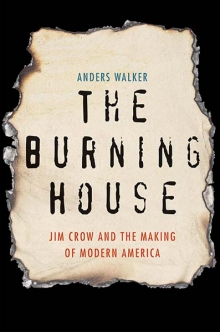Anders Walker—
The recent opening of a lynching memorial in Montgomery, Alabama underscores the role that violence played in upholding racial segregation, or Jim Crow. From the 1870s through the 1950s, even the slightest challenge to white supremacy could spark a violent, terrifying backlash. And yet, the actual incidence of lynching in the region remained relatively low. According to historian Amy Louise Wood, lynching was an “infrequent and extraordinary occurrence,” an event that was powerful precisely because of its “relative rarity,” something that all southerners knew about, but rarely witnessed.
How could 4,000 murders be considered a rarity? Looked at in terms of the aggregate black population in the region, which at the end of the Civil War amounted to roughly 4 million, the total number of African Americans murdered by white mobs remained around .0001 percent. Compare that to the number of Jews killed by Germany during World War II. Out of 9.5 million European Jews in 1933, 6 million lost their lives by 1945, almost 60%.
According to historians Tim Snyder and James Q. Whitman, the two stories were linked. As early as the 1920s, for example, Snyder shows that Germans like Adolf Hitler looked to the United States as an example of a predominantly Aryan nation that had risen to power because it had maintained racial purity and gained control of a continent, a strategic position that made the U.S. even stronger than imperial powers like England, who relied on distant colonies to remain ascendant. Nazis even studied American race law, argues James Whitman, drawing inspiration from American restrictions on immigration and interracial marriage.
However, the Germans never adopted segregation. According to both Snyder and Whitman, Germans wanted to eliminate Jews from Germany, not keep them around. The South was different. White southerners needed blacks – and so long as they remained in a subservient position – professed even to like them. This explains why some of the region’s most prominent white voices, from William Faulkner to Eudora Welty to Harper Lee, all presented white/black relations as supportive, even loving arrangements: from Benjy and Dilsey in Sound and the Fury, to Dr. Strickland and Ruby in Welty’s short story “The Demonstrators ,” to Scout and Calpurnia in Mockingbird. African Americans like Richard Wright and Ralph Ellison disagreed, of course, but whites remained steadfast in their belief that blacks were happy in the South, happy with them, and content to abide by regional norms.
That lynching reinforced those norms was not something that educated white southerners liked to admit, as Joseph Crespino explains in his new biography of Atticus Finch. But they knew it. Like a nuclear warhead, it kept the peace.
Anders Walker is the author of The Burning House: Jim Crow and the Making of Modern America (New Haven: Yale University Press, 2018), and The Ghost of Jim Crow: How Southern Moderates Used Brown v. Board of Education to Stall Civil Rights (New York: Oxford University Press, 2009). He teaches law and history at Saint Louis University in St. Louis, Missouri.
Further Reading

Featured photo of the Memorial Corridor at The National Memorial for Peace and Justice via Wikipedia Commons


 Burning With Passion: Selected Poems from Catullus
Burning With Passion: Selected Poems from Catullus